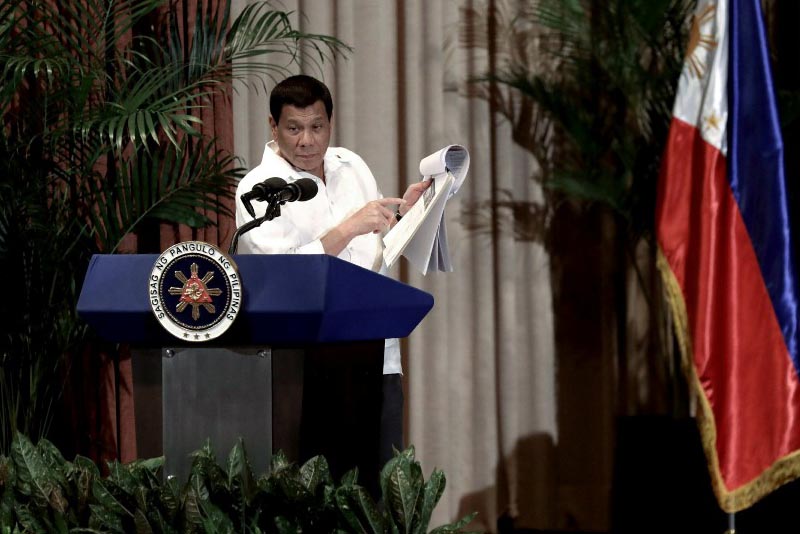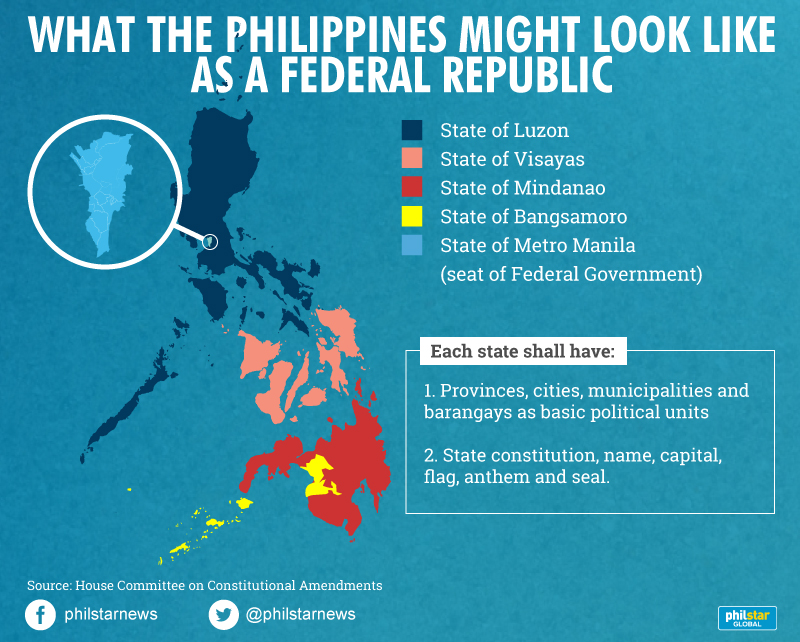Quick Facts: What's inside the House-proposed federal charter?

MANILA, Philippines — The House of Representatives on Tuesday voted to convene Congress as a constitutional assembly to amend the country’s 30-year-old Constitution in preparation for the country’s switch to federal system of government.
The switch to a federal system was one of the key planks of President Rodrigo Duterte’s election campaign, along with his deadly war on drugs. The country currently employs a unitary form of government with much of the power emerging from the central government.
According to Duterte, federalism would provide more powers to local governments to eliminate poverty in provinces, including the power to establish courts, implement business regulations and impose taxes.
In a late afternoon session, members of the House Committee on Constitutional Amendments abruptly ended debates and voted to convene as con-ass, a swift decision that some opposition lawmakers protested.
If the House con-ass measure gets Senate concurrence, leaders of both chambers would set a schedule for the drafting of the envisioned federal Constitution.
Inside the House-proposed draft charter
Form of government
Under the lower house’s planned draft for a new charter, the legislative power will be vested in the parliament — which will consist of the Federal Assembly as the national legislative department, and the Senate as the legislative body representative of the regions.
The federal assembly will be composed of not more than three hundred members “unless otherwise provided for by law.” On the other hand, each state will have a minimum of three seats in the Senate.
Meanwhile, the president of the Philippines will be elected by direct vote of the people for a term of five years with one re-election.
The president will remain as the head of the Armed Forces and foreign affairs and will have oversight powers over all branches of government, constitutional bodies, and independent bodies, among others.
He will also have the power to grant reprieves, commutations and pardons.
The head of the government will be the Prime Minister, who will be elected by a majority of all members of the parliament from among themselves.
Among the functions of the prime minster include the appointment of cabinet members, preparation of annual budget of the federal republic, entry into contracts on behalf of the government, and execution of all laws and decisions by the Federal Supreme Court.
The vice president will continue her duties until 2022 while the functions and powers of both the Office of the Ombudsman and the Sandiganbayan were retained in the new proposal.
States
The territory of the Federal Republic will be divided into five states which will have their own State Constitution, name, flag, anthem and seal:
- State of Luzon
- State of Visayas
- State of Mindanao
- State of the Bangsamoro
- State of Metro Manila (seat of Federal Government)
Each state will have a Premiere who will exercise executive power. The states will also have the power to organize and supervise their own police agencies.
In terms of fiscal matters such as revenue sharing, a law implementing a “fair and equitable system” will be enacted by the Parliament.

People are divided regarding any attempts to amend the Constitution, with administration critics accusing legislators of seeking to perpetuate themselves in power, or of finding a way to extend Duterte’s term beyond 2022.
But Duterte had repeatedly said he would prefer to retire earlier.
The issue of amending the Constitution is a sensitive topic in the Philippines, a country once under Marcos dictatorship for two decades, over fears that it will be used to prolong the term of the chief executive.
A move to amend the charter during President Gloria Arroyo's term was met with protests as concerns that it was intended to extend her term loomed.
- Latest
- Trending




























